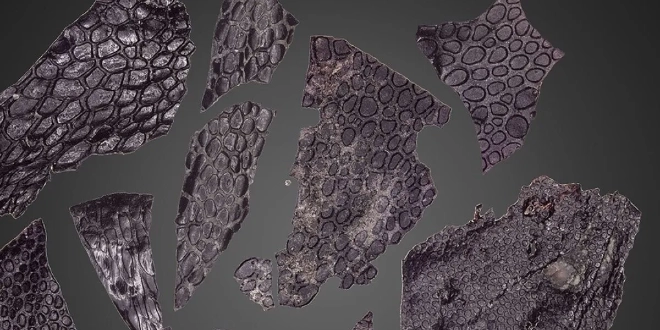Scientists have made a remarkable discovery, uncovering a 286 million-year-old fossilized skin fragment with a distinct pebbled texture resembling that of a modern crocodile. This finding, published in the Current Biology journal, surpasses the age of any previously known skin fossil by at least 21 million years. While the creature to which this skin belonged remains unidentified, researchers speculate it may have belonged to an early Paleozoic reptile.
What sets this discovery apart is the presence of rare soft tissue within the fossilized skin. Ethan Mooney, a graduate student in paleontology at the University of Toronto and the study’s lead author, emphasized the significance of such findings in enhancing our understanding of ancient animals.
These fossils were retrieved from the Richards Spur limestone cave system in Oklahoma, renowned for its excellent preservation conditions. Fine clay sediments, an oxygen-poor cave environment, and oil seepage at this site played a pivotal role in conserving the ancient skin.
Tea Maho, a co-author of the study, meticulously examined the minuscule fossilized skin, which exhibited detailed epidermal tissues characteristic of amniotes. Amniotes are a group of terrestrial vertebrates encompassing reptiles, birds, and mammals, having evolved from amphibian ancestors during the Carboniferous Period.
The discovery’s significance lies in the resemblance of the pebbled skin and hinged regions between scales to those of ancient and modern reptiles. However, the absence of associated skeletal remains prevents researchers from confirming the species to which this extraordinary skin once belonged.


